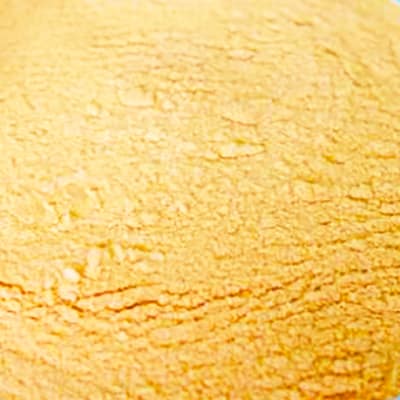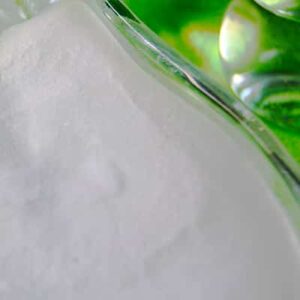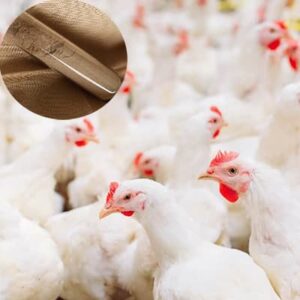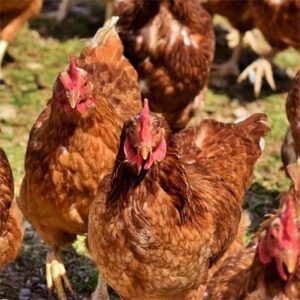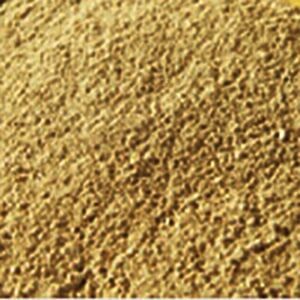Product Video
Product Introduction
Product Description
NSP enzyme is a new efficacy enzyme with β-mannanase as the main component. The main mechanism is the anti-nutritional factor β-mannan can be efficiently degraded to mannose oligosaccharide (MOS) in the animal digestive tract. On the other hand, the immune stimulation of soybean meal, cottonseed meal, rapeseed meal, and other feed materials can be alleviated, to reduce the energy consumption of the animal body acting on immune stress; At the same time, the mannan oligosaccharides produced by degradation have good intestinal health regulation function, can promote the proliferation of beneficial bacteria in the intestinal tract, improve the intestinal microflora and improve the integrity of intestinal mucosa.
Feed enzymes are produced by microbial fermentation and are enzymes that are added to feed to improve digestion and utilization of feed or to improve metabolic efficiency in animals. Enzymes that can be added to feed include Protease Mix, Thermostable Phytase, Highly Efficient Phytase, NSP Enzyme, Lipase, Pectinase, Cellulase, α-Amylase, Alpha- Galactosidase, Beta-Glucanase, Glucose Oxidase, Thermostable Acid Protease, Acid Protease, Thermostable Acid Beta-Mannanase, Beta-Mannanase, Xylanase, etc.
About 70% or more of poultry sticky wheat rations worldwide have enzymes added to them, and nearly 90% of poultry feeds in Europe contain enzymes.
Enzyme preparations are divided into three main categories:
Non-starch polysaccharidases
Non-starch polysaccharide enzymes include xylanase, β-glucanase, β-mannanase, cellulase, α-galactosidase, pectinase, etc., which act on the corresponding NSP in the feed. livestock and poultry do not secrete this type of enzyme and must be added exogenously from the feed, which is the main enzyme preparation for feeding.
Phytase
Phytase has a special spatial structure that sequentially separates phosphorus from phytic acid molecules and degrades phytic acid (salt) into inositol and inorganic phosphorus, while releasing other nutrients bound to phytic acid (salt).
Endogenous digestive enzymes
Endogenous digestive enzymes are enzymes that can be secreted by the animal’s digestive tract itself, mainly proteases, amylases, and lipases. In some special cases, endogenous enzymes also need to be supplemented by the feed.
Product Feature
- It can replace antibiotics and reduce antibiotic residues in animals.
- Promote livestock and poultry growth, reduce diarrhea, improve the feed utilization rate, and economic benefits.
- Degradation of anti-nutritional factors in feed improves energy and protein utilization rate.
- Participate in immune regulation, improve immunity, and improve animal disease resistance.
Product Parameter
Species: poultry or livestock.
Dosage: 150-200 g/MT of complete feed.
Appearance: light yellow or brown powder.
Raw material composition: β-Mannanase, xylanase, β-glucanase, cellulase, etc.
Loss on Drying: Not more than 10%.
Product Packaging and Key Point:
Package: 25kg / bag.
HS Code: 2309901000
Gradually dilute when using, use as soon as possible after opening. If there is any surplus after use, the bag should be tightened. If a released product can be swept up and if not contaminated can be used for animal feed. 12 months under proper conditions in a dry, well-ventilated, and cool place with packaging unopened, away from sunlight.
Related products
-
Animal Feed Additive Products
Animal Feed Additive Liquid Tributyrin
-
Feed Enzyme
Feed Enzyme Highly Efficient Phytase
-
Feed Enzyme
Feed Additive Feed Enzyme α-Amylase
-
Feed Enzyme
Animal Feed Additive Alpha-Galactosidase
-
Feed Enzyme
Feed Additive Animal Feed Enzyme Beta-Glucanase
-
Feed Enzyme
Feed Additive Feed Enzyme Glucose Oxidase
-
Feed Enzyme
Animal Feed Additive Acid Protease
-
Feed Enzyme
Feed Additive Xylanase Feed Enzyme

